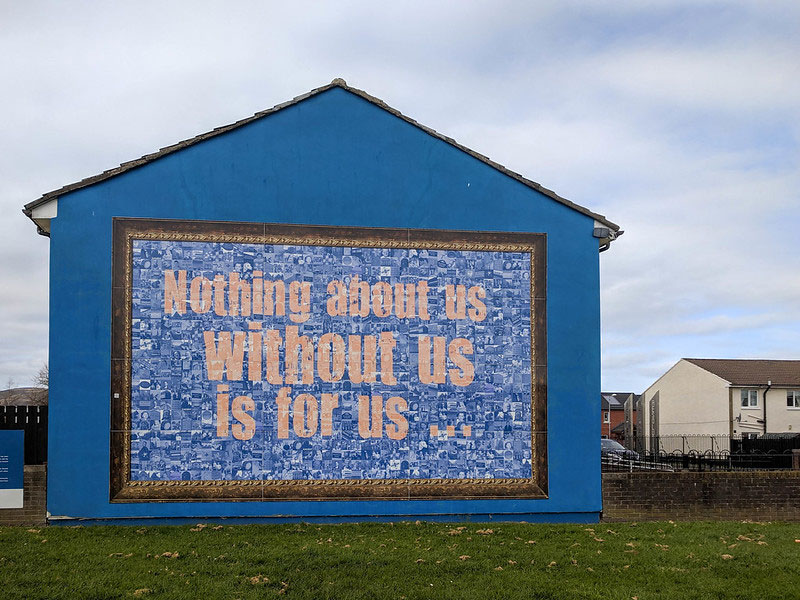
Group decision making is as old as tribal councils, used by societies in every century on every continent. Even in ancient times, tribes and clans delegated some decisions to the deliberation and exchange of a leadership group, which (when they work well) can lead to better and more widely accepted decisions.
Present-day decision-making groups share many of the goals of the prehistoric wise councils assembled around the campfire and seek to build their own traditions, legitimacy, and experience. But humans being humans, all such groups face the challenges of consensus building, politics, and other hurdles common to the decision-making process.
Recommendations on board recruitment often suggest that people are essentially interchangeable parts, only differing in their professional training. Plug in an accountant, a lawyer, a human resource professional, a number-savvy business drone, and some other good-hearted souls with time on their hands; schedule some meetings; and let the governing commence!
This strategy, of course, provides little of the visceral connection of lived common cause. There is something random and naive about the way many organizations go about building their boards—and it shows. Even in the most institutional of nonprofit boards, with a standardized board design and plenty of administrative support, it is not unusual to find trustees in a kind of mild-to-severe fog. A survey by the Chronicle of Higher Education finds that
40 percent of university trustees admit to feeling “slightly” or “not at all” prepared to carry out their duties.1 No organization would aspire to this state of affairs at the staff level, yet an energetic but badly focused board member can leverage more control and cause more disruption than most staff. And a low-energy board is just a drain.
In what ways do nonprofits need to elevate the thinking about the development of their boards? Do we focus on the wrong stuff? This article suggests that we do and presents a series of stories that focuses the reader on critical but neglected aspects of board development.
Those Pesky Human Beings
“No [board] design is automatically great,” says David Renz, a national expert on nonprofit boards. “It’s just a start, and then you add the people—and then it often gets really weird, and that’s the way it is. Structure does not and cannot guarantee performance, although it can certainly get in the way. The reality is that a group of talented and committed people can make even the lousiest structure work because they develop processes—sometimes very informal ones—to get around the flaws.” The same is true in the reverse, of course: a talented group driven more by individual ego than collective mission can make even the most rational of structures a joke.
This observation probably resonates with many readers and explains in part why simple structural approaches to board development so often fall short of desired outcomes. Is it possible that the characteristics and orientation of board members matter more than skill sets and contacts? The answer to this question might actually excite us out of rote stupor, revealing more potential for the diversity of board design.
Constituents Above All Else
A battered women’s shelter based in a small Midwestern town has a 60-member board that is consensus based and comprises only active volunteers, who contribute at least four hours a week to the organization. Few of these volunteers have overwhelming individual influence—they are a motley crew, from full-time students to carpenters and accountants—but the board can and does mobilize on a moment’s notice. The board is not always in accord. There are no term limits: when board members object to the organization’s direction, they vote with their feet. Decisions are made by modified consensus. To outsiders the board structure might seem untenable, but it has some characteristics that make it work quite well: all board members have the common experience of having participated in a 36-hour training program that focuses not only on the practice at the shelter but on the theory behind the practice. This is required for any volunteer (and therefore any board member), and all board members have direct experience with the women who stay at the shelter.
What makes this board work? Each board member is well versed in the realities of life for the women whom the organization serves, because board members have actively learned about these challenges. They watch how situations unfold over time, the women’s interactions with the police, the courts, the schools and their batterers. They are adept at judging the impact of budget decisions and organizational strategies because they have this knowledge and because their training gives them a grasp of program options in general and puts the theory of this particular program in context.
This board framework would not work everywhere, but it has some intriguing elements in terms of board members’ deep understanding of program, constituents, environment, and a design that is well suited to the particulars of the organization. A description of the “structure” sounds ominously untenable to many. But when this organization suddenly lost most of its funding, the board mobilized itself and all of its friends and, within six months, had significantly improved the organization’s financial position from where it was pre-crisis.
Agreements on the Focus and Role of the Board are Mutable
The Sailors’ Beacon Preservation Group is dedicated to restoring and maintaining a lighthouse in the Pacific Northwest. The board is a mix of local blue- and white-collar professionals, including fishermen, architects, insurance agents, and farmers. The organization has a strong founder who is now the executive director, and the board struggles to provide a balance through its governance function. Some new board members rotate out quickly in frustration over a lack of board control, especially if they have had experience on other boards. Others remain on the board for years at a time—there are no term limits—and are highly engaged in helping the grassroots effort to maintain the lighthouse and develop education programs for the public on maritime history. These board members provide flexibility for the strong founding leader and engage in high-level conversations that ensure a focus on mission. They sometimes lock horns with one another or with the director, but in general the board members who stay enjoy serving on a board that has developed a culture that reflects the needs of the lighthouse and of the public.
This group was not always effective in its governance role, however. During the mid-1990s, there was intense conflict between the founding executive director and board members, who wanted to share the reins. An organizational consultant helped the board with some classic role definition, enabling members to recognize that there was quite a bit of board business that they had neglected and that they could strike a balance if they defined their governance work within parameters rather than focusing solely on the work of the executive director. There was a seminal planning meeting on a cold winter’s day at the lighthouse, where the board and executive director agreed to a strong vision and mission. For the next decade, board members were deeply oriented toward the mission, and every boardroom decision was made with this mission as the key screen. Finally, the group created an annual check-in on its own performance and worked to improve the governance function. The strong-minded executive still posed some challenges to work with, but rather than tear and claw at the strengths of the founder, the board strengthened its own role, held itself accountable, and worked to improve itself incrementally and to create accountability with its publics, its mission, and among each other.
Again, this structure doesn’t work in every organization. But according to the organizational consultant hired to improve the maritime nonprofit, when the board placed the mission at the center of the conversation, everything else fell into place. Each board fits its nonprofit in a slightly different way, and many board types and patterns work. In some cases, the fit may work for a while and then need some revision. This is not a failure unless we cast it that way. If anything, the sector is lacking in creative board design.
Negative Effects of a Well-Intentioned Structure
The board of a statewide coalition of local activist groups meets quarterly, often just barely making quorum. Among the board members, levels of knowledge, energy, and interest vary considerably, which is not surprising given that the coalition’s 30-plus member organizations each appoint a representative, some of whom care deeply about public policy and some of whom are just plain disinterested. There is also a mix of executives and line staff members on the board, reflecting the orientation of the member group to the coalition. Meetings take place in the middle of the state and often start late because of the delayed arrivals of the less motivated. The coalition spends a lot of time and psychic energy on dead-end discussions and on conflicts among the members. Sometimes individual board members bring their conflicts with their home groups to the meeting, which only confuses things. Members often resort to reciting the bylaws to one another. Still the coalition gets the work done, breaking new ground in law and policy and lobbying successfully for funding streams. Its accomplishments are attributable in part to a small group of committed staff and also to a small core of active board members and independent stakeholders. Participation may not be equal, but invested groups create organizing capacity sufficient to the statewide purpose of social change.
This example raises the issue of appointed board members, which over time often looks much better in theory than in practice. The idea behind appointing board members is that certain kinds of organizations need buy-in from other partner organizations for their boards to function well. This leads some small-scale social engineers to require that seats on the board be reserved for appointed members from those organizations. This structure does not, of course, indicate whether there is any heartfelt participation among individuals or whether there is any chemistry of mutual attraction to a goal that makes a group really sing.
In “Boards Behaving Badly,” Owen Heiserman discussed the unfortunate legacy of a mandated policy of “inclusion” in community antipoverty agencies.2 One national organization I know of said it was fine idea, as long as the board retained its original liaison board members. But with each successive representative, the purpose of board membership became more vague; indeed, showing up at all was more about what a representative was required to do for the home-appointing organization than about a sense of commitment to the organization. This is clearly not a good dynamic for any board, and it creates a two-class system of board members. In this case, the result was pretty much the antithesis of the women’s shelter board mentioned previously: distantly connected, unmotivated, and uninformed members do not an exciting board make. It’s not that appointed board members are necessarily a bad thing, but they bring some significant challenges to team building.
If appointed board members come from an agency that funds the organization, it can add another layer of complexity. Another organization I encountered was established with an appointed board comprising middle-management staff in state agencies that work with women making the transition from welfare to work. The charge of the organization: advocacy for better practice at those agencies. The organization’s first director was a tireless critic of the unwillingness of state agencies to cooperate with one another. But at some point, they proved him wrong with a well-coordinated campaign to oust him from his job. The organization then limped along as a service group. State-agency representatives stopped coming to meetings, and eventually the mandate for their participation was removed from the organization’s bylaws. Certainly, questions should have been raised up front about the sustainability of a board that included members appointed from agencies that were the target of the group’s criticisms. But the private funding source involved saw inclusion as a way of selling the idea to the then-administration—which changed after the next election, of course—along with agency heads.
We have all seen these appointed and partially appointed boards flounder and fail, but precious little research has been done on this design issue, and little in general has been written about it. Again, a few committed humans can overcome these kinds of structural barriers, but it almost always means that an organization has a titular board and a group of behind-the-scenes players who make things happen.
Sign up for our free newsletters
Subscribe to NPQ's newsletters to have our top stories delivered directly to your inbox.
By signing up, you agree to our privacy policy and terms of use, and to receive messages from NPQ and our partners.
Imprisoned by Board Culture
The board in a low-income community organization is a stickler for process. Forty years ago, the organization started out as an innovative collection of community activists, but now it offers a standard menu of service programs whose parameters are defined by the state. Board members are recruited for their technical skills and their political and social contacts. The board is dysfunctional, with opposing cliques attempting to capture new members to their point of view. Mean-spiritedness is the order of the day. Each meeting starts with a lavish dinner and then the presentation of an executive report, which is usually lengthy and defensively structured. Defensiveness is reasonable, considering that board performance reviews of the executive are either overly effusive (during the honeymoon stage, the new executive director is greeted as organizational savior) or highly critical (once the director has inevitably fallen from the perch), with great detail provided on the executive’s failings. Formal language and Robert’s Rules paper over any acknowledgement of the depth and chronic nature of the board’s problems. Executive staff at the CEO and CFO levels circulate in and out of the agency through a revolving door, often leaving tangles of financial and relationship problems with funders.
What makes this board malfunction? During its formative years, two well-respected individuals led the organization. The board supported but also depended on them as the glue and public face of the organization. Subsequent executives were less able to bring cohesion or excite loyalty from the board as a whole, and the board inevitably splintered into two camps: one for and one against whoever happened to occupy the executive’s chair at the time. Thus the boardroom is a space locked in conflict and fraught with danger. People either stay out of the line of fire or join a side. Real conversations take place in the parking lot on the way out. No amount of retreat is going to affect the tenor of the room until those who inhabit it admit that they are the problem—and that’s a tall order. After all, they are volunteers and each of them, with some legitimacy, views himself as a community-minded individual. As they squabble with one another, many of the programs and relationships with funders are in a free fall. This board is in the habit of offloading responsibility and has instituted a “Love ya now, hate ya later” cycle with all executives. A steady stream of consultants enters and leaves without effect.
Look around any community, and you will see sad boards; happy boards; focused, aligned, thoughtful, and mission-centric boards; pedantic, self-satisfied, and tiresome boards; sloppy boards; and obsessive-compulsive boards. When humans come together, they create a whole of the parts, which can seem confounding when the whole is much less than the sum—a common complaint of boards. But the group may have created its own invisible limitations—a very human characteristic.
There is little attention paid to the gestalt of boards, but of course each board has one. A gestalt involves three sets of attributes: the entity in all its own complexity, the entity’s context, and the relationship between them. So an organizational gestalt—and when it is functionally separated, a board gestalt—can reflect the culture of the organization’s sector, its geographic area, the governance preferences of the local United Way , or all of the above. It can also be deeply affected by the “creation story” of the organization. Did the organization have to fight its way into existence? Was it the product of a large, ill-informed grant from a national foundation that later abandoned the infant effort? Human beings tend to carry epic stories forward as fables with morals, and they will force-fit outcomes to their expectations, even when that means repetitive failure. Does the board tend to lead, or does it follow a strong executive? Does the board appoint members, or does its membership elect board representatives? Not only do these questions matter, but the stories that explain how the organization arrived at its present state also matter.
Cultural attributes cannot always be structured in or out, but acknowledging them provides a board with more control. As Edwin Nevis, the president of Gestalt International Study Center, says, “Awareness is the precursor to effective action. Awareness leads to choice.”
I have discovered that people can be shy about naming such stuff—opting instead to banish a few purveyors of disturbance from the room—only to find this troublemaking mysteriously replicated by others shortly thereafter. You may recognize this dynamic from family systems therapy. The board is, after all, a group of human beings.
There is No “Away”
One NPQ reader writes: “There is a bit of a disconnect in the cultural approaches [between board and staff]. It’s not a real issue, but my board does not play a major role in the heart of the organization. While I could recruit new board members onto our board who think differently, I also have to keep our public credibility in mind. It’s very handy to have a well-respected lawyer or businessman on the board for that reason. It does not feel right, in terms of our real ethos, so it’s a fudge. [I] don’t know what the solution is yet.”
One rule of systems thinking is that there is no “away.” If we dump hazardous waste, it will come back to haunt us. The same goes for sliding our boards to the side. We are often confused when staff acts out of one set of motivations and the board out of another. Sometimes this is a function of a board’s belief that it should take a certain stance to counterbalance staff behavior, but sometimes it is just a function of relative isolation (which can easily happen if the executive is the only point of contact). This duality—and the tendency of boards to be insufficiently familiar with the details of the work of the organization—often leads to executives’ attempts to “manage” (read: marginalize and contain) the board.
An attempt to “manage” the board often leads to its members being the last to know about organizational problems. The programs can have a terrible reputation, the funders can lose trust, and the surrounding community may have an opinion of the organization that belies its mission intentions—without the board really accepting that this is the case. The board may have a heroic view of the organization, even if that view coexists with a sense of discomfort about things left undone.
This, of course, can lead to a revelatory moment when the board finally “hears” negative information that has been building over time. Such revelatory moments can be brutal and bloody. In one case, the attorney general cited an organization for a questionable fundraising strategy after the board had been told repeatedly that the organization might have hosted a wealth of other ethical lapses. But it was not until the staff led an open rebellion that the board had an epiphany. Until the mutiny, the board acted as though it had been unfairly singled out by the IRS and that the internal alarm sounders were merely expressing personal agendas. Board members took no steps to ensure that protective protocols were in place.
On the other hand, a failure to manage how a board receives and interprets information may cause its members to focus on relatively unimportant details and lose sight of core organizational strengths. Executive directors worry that their boards won’t balance the big picture with the details. This inability to rank organizational issues can waylay an organization, sometimes interminably, and that’s why the basic proposition of the policy governance model is inviting to some boards and executives (a colleague recently described the Carver method to me as the “executive empowerment model”).
For an executive to feel comfortable in relinquishing the bad habit of “managing” the board, he must depend on the board chair and committee chairs to frame and manage conversations, and that requires that the character, background, and, most importantly, the alignment of board members with the mission are primary criteria for recruitment and leadership. The women’s shelter exemplifies this principle. All its board members were steeped in the theory and practice of the organization. Three months of volunteering at the shelter sorted out who worked well with others. And, as Harrison and Murray’s article on page 24 notes, the characteristics of the board chair are particularly important. In the case of the shelter, the board chair was an unassuming, humble woman, respectful to everyone, not a gossip, quick to laugh—but steady as all get-out.
In Conclusion
People are strange: some for better and some for worse. So it has always struck me as next-to-insane to bring people on to a board when they have no significant experience in the work of the organization. It’s a swift way to borrow trouble. How do we know how they work in a team setting? Do they like to build cliques and secret allies, or do they care enough about the work to spend time selflessly on it? What better way to test such things than to organize people into working committees. Do they produce? Do they follow through and bring others to the work? Are they self-aware or quick to defensiveness (“Who are you calling defensive? I’m not defensive!”)?
Creating committees that involve people who are interested in what you do and are well charged has so many benefits. But among them are more advocates, more long-term donors (volunteers tend to give), more creativity, and more connections. Such committees make the organization more dynamic and give it higher profile, and they are a wonderful testing ground to identify those humans who can be trusted to be thoughtful, enthusiastic stewards.
Here is my first suggestion: build these committees, and dedicate real staff time to them. Make them a part of your engagement strategy. Mix up the members between staff, constituents, and interested others, and watch who rises to the surface as a prospect for board service. Use them to encourage the appropriate mélange of community activists and leaders who might productively populate a board that can be trusted with the organization’s future.
My second suggestion is to think more creatively about governance in general. What role could it ideally play in your organization, and what board design facilitates that? Get past the default mindset of “boards must do this” and “boards should do that” to find the truly imaginative and inspired functions your board can and should fulfill. Most obviously, don’t rely on fundraising prowess and connections as the lens for board recruitment. You may be conditioned to believe that connections are your key to a healthy budget, but recent research finds no proof that organizations that recruit for connections are any better off than those that do not. Moving away from a myopic focus on rote board functions can reveal potential for additional board contributions—beyond fundraising—and the strange, wonderful, and insightful people who might be recruited to realize these board visions.
There is lots of room for variation. Little is written in stone regarding the shape and use of boards. Yet decades of consulting would have groups believe otherwise, and so good people waste inordinate amounts of time trying to fit their unique organizational cultures into prescriptive models. Governance is not a structure but a process. That process must remain responsive not only to what the constituents and the organization need but to what the dynamic in the boardroom and between the board and the executive needs to be to get the work done in the most optimal way possible.
Finally, the dedication of each board member to the accomplishment of the mission and best interests of the organization’s constituents should be unquestionable. This is hard to ensure without each board member having spent considerable time in the work of the organization and with a variety of constituents. It only makes sense to create testing grounds elsewhere in your organization for the quality decision makers and advocates you really need on your board.
Endnotes
1. Jeffery Selingo, “Trustees: More Willing Than Ready,” the Chronicle of Higher Education, May 11, 2007.
2. Owen Heiserman, “Boards Behaving Badly,” the Nonprofit Quarterly, Vol.12, No. 2, 2005













